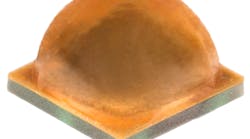The objective, says the EPA, is to facilitate robust testing which builds upon industry best practices and helps maintain confidence in Energy-Star-qualified lighting products. EPA developed this guidance in consultation with LED package and array manufacturers.
A cover letter sent along with the guidance document is copied below:
This guidance relates to subcomponent-level performance data and addresses topics not explicitly covered in Energy Star lighting specifications because of the quickly evolving nature of SSL technology, including: the content of IES LM-80-08 (“LM-80”) test reports, case temperature measurements, sample set correlated color temperatures, successor (next generation) devices, and LED array testing.
A draft was distributed on June 24, 2011 for stakeholder review. The feedback received by EPA in response to the June 24 draft focused on three primary topics:
- Testing requirements for LED arrays: In response to stakeholder input concerning the testing of large and small LED arrays to represent a range of array sizes, the guidance was changed to require testing of a worst-case scenario (i.e. the largest LED array anticipated to be used in a qualified product), and permits that data to represent smaller arrays.
In addition, EPA believes the revised testing approach adequately addresses the Agency’s concerns about the contribution of wire bond failures to lumen depreciation in LED arrays without calling for variations in wiring configurations across test samples.
- Remote phosphor configurations: The Agency notes a lack of industry standardized definitions for topics related to “remote phosphor” (i.e. where blue LED dies or LED packages are placed at a distance from the phosphor that produces white light). In particular, the question arises, what minimum distance must separate the phosphor, and/or what other parameter(s) must be satisfied, for the term to apply.
Questions are also outstanding about the optical performance, and the potential for degradation of, other materials comprising the space between the blue LEDs and the phosphor (commonly referred to as the ‘mixing chamber’), and the contribution of mixing chamber geometry to lumen and color maintenance. The piecemeal approach of selecting blue LEDs, phosphor, substrate and mixing chamber materials is not presently supported by industry standards which EPA-Recognized Certification Bodies can reference when determining compliance with Energy Star lumen maintenance requirements.
Since LM-80 includes scope for evaluating the lumen maintenance of remote phosphor LED modules, where the above elements are incorporated into one testable unit, EPA intends to maintain this approach while following industry efforts to address these topics.
- Successor subcomponent provisions: Questions were raised concerning the relevance of some elements of the “successor” definition. In response, EPA concluded that removing LED die size, and subcomponent packaging size from the successor definition will not have a negative effect on the quality or comparability of successor lumen maintenance data.
Regarding the restrictions placed on deposition processes and drive current, changes have been made to clarify those portions of the definition. Feedback indicated general agreement with the definition language regarding the optical path and thermal resistance. The other elements of the successor definition were maintained to ensure that direct comparisons of successor and original LM-80 reports can easily be conducted by EPA-Recognized Certification Bodies.
In addition to the above, language was clarified regarding color-temperature tolerances, subcomponent model and series numbers, and LED array substrates. Reporting requirements included in the Luminaires V1.1 specification were added to section 3.2 for consistency. EPA intends for LM-80 testing and reporting to follow this guidance going forward, while providing allowances detailed in the guidance for testing and reporting already completed, as well as testing which is currently underway or in the final planning stages.
The Agency recognizes that this technology is rapidly evolving, and that the SSL industry is in the process of working towards consensus on some outstanding technical issues. Due to the rapidly changing nature of the market, while this document is final, EPA will continue to track progress and testing results to determine when changes to this document are necessary.
Questions or concerns about the final guidance document can be directed to Alex Baker [email protected], Energy Star Lighting Program Manager, EPA.




